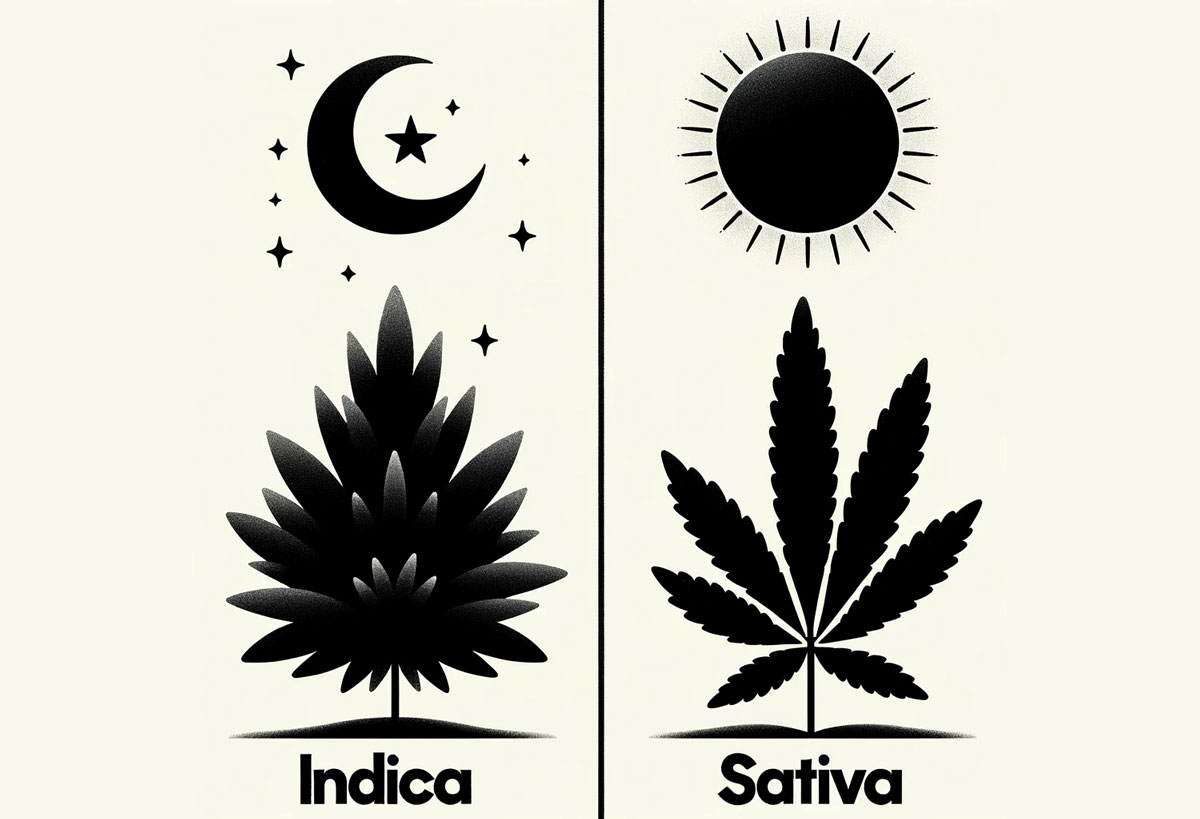In the verdant world of cannabis, two primary strains stand as pillars: Indica and Sativa. Each possesses distinct characteristics, effects, and medicinal benefits that cater to a myriad of needs and preferences. This article aims to demystify these strains for those curious about the green allure of cannabis.
Defining the Strains
• Indica: Originating from the Hindu Kush mountains near Afghanistan, Indica plants are like the stoic monks of the cannabis world: short, bushy, and resilient. They are characterized by broad, dark green leaves, and their sturdy stature makes them well-suited for colder climates with shorter growing seasons.
• Sativa: In contrast, Sativa plants are the wandering minstrels, hailing from equatorial regions like Thailand, Mexico, and Colombia. They grow tall and thin with narrow leaves, resembling an elegant green ladder stretching towards the sun. Sativas thrive in warm climates with long, sunny days.
Growth Patterns and Characteristics
• Indica: Indica plants typically have a shorter flowering time, making them a favorite among growers looking for a quick harvest. Their compact size is ideal for indoor cultivation.
• Sativa: Sativas require more time to flower but reward the patient grower with a higher yield. Their height can pose a challenge for indoor growing, making them better suited for outdoor gardens where they can reach for the sky.
Cannabinoid and Terpene Profiles
Both strains contain cannabinoids like THC (tetrahydrocannabinol) and CBD (cannabidiol), but in varying ratios which influence their effects:
• Indica: Generally, Indicas have higher CBD levels, contributing to their reputation for a relaxing, ‘body high’. They often contain myrcene, a terpene that promotes sedation and relaxation.
• Sativa: Sativas are known for higher THC concentrations, leading to a more energizing, ‘mind high’. Terpenes like limonene and pinene offer uplifting and invigorating effects.
Psychoactive Effects
• Indica: Often referred to as ‘night-time’ strains, Indicas are sought after for their deep relaxation properties. They may help unwind after a long day, reduce anxiety, and aid sleep.
• Sativa: As ‘day-time’ strains, Sativas provide an energetic and creative buzz. They’re your companion for social gatherings, creative endeavors, or just when you need a sunny pick-me-up.
Medicinal Benefits
Both strains offer therapeutic benefits, but their different profiles make them better suited for specific conditions:
• Indica: Ideal for chronic pain, muscle spasms, anxiety, insomnia, and stress relief. The sedative effect of Indicas makes them a good choice for nighttime use.
• Sativa: Commonly used for chronic fatigue, mood disorders, attention deficit disorders, and appetite stimulation. The uplifting effect is better suited for daytime use.
Potential Drawbacks
While beneficial, cannabis can have side effects. Indicas might lead to ‘couch-lock’ or over-sedation in some users, while Sativas might increase anxiety or lead to paranoia, especially in those with a predisposition.
Ideal Use Based on Qualities
Indica: Perfect for a relaxing evening, meditation, or as a sleep aid. It’s the strain you turn to when you need to decompress and nurture your body.
Sativa: Choose a Sativa when you need to spark creativity, socialize with friends, or invigorate your mind during a sluggish afternoon.
Conclusion
Indica and Sativa strains each offer a unique palette of benefits, effects, and experiences. Understanding these can guide you to the strain that harmonizes with your needs and lifestyle. Whether you seek the calming embrace of Indica or the spirited touch of Sativa, both strains open a door to understanding cannabis’s complex and varied nature. As with any substance, moderation and responsible use are key. Here’s to a journey of discovery and well-being with nature’s own.

